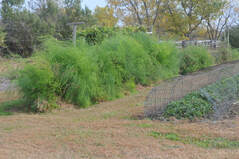 Harvest is long past but now is the time asparagus and rhubarb plants build up needed reserves for the next year. Be sure to water during dry weather and keep plants free of weeds. Rhubarb should not be fertilized now but in early spring (March). Do not fertilize asparagus now or in early spring but rather wait until after harvest next year. Asparagus foliage should be left until all green is gone. It can then be removed or left for the winter to help collect snow. (Ward Upham) 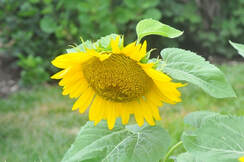 Sunflowers are usually ready to be harvested beginning in mid-September and into October. Seed heads can ripen on the plant, but they will need protection from birds. Try covering the heads with a paper sack or cheesecloth once the petals start turning brown. Use a twist tie or rubber band to secure the covering. This will not only help keep birds out but will prevent ripened seeds from dropping out of the head. Check for maturity by looking for the following signs: – Florets in the brown center of the flower disk should be shriveled. – Heads should have turned down. – The backside of the head should be lemon yellow. The ultimate check, of course, is to pull a few seeds to see if they have turned black with white stripes, the typical color. Empty shells usually indicate a lack of pollination earlier in the year. If heads are to remain uncovered, harvest when a few seeds start turning black and white. The flavor will not be good as when seeds are allowed to ripen on the plants, but fewer seeds will be lost. Cut the heads and place in a paper sack. Some people prefer to cut the heads with about a foot of stem attached and hang them upside down in a dry, well-ventilated area. A paper bag or cheesecloth can be placed over the heads to prevent seeds from dropping as they dry. Seeds can be easily removed from dry heads by rubbing gently. Roasting Seeds Raw, mature seeds may be prepared at home by covering unshelled seeds with salted water (2 quarts of water to 1/4 to 2 cup salt). Bring to a boil and simmer 2 hours, or soak in the salt solution overnight. Drain and dry on absorbent paper. Put sunflower seeds in a shallow pan in a 300-degree F oven for 30 to 40 minutes or until golden brown, stirring occasionally. Take seeds out of the oven and add 1 teaspoon of melted butter or margarine, or cooking oil per 1 cup of seeds if they are to be eaten immediately. Stir to coat. Put on an absorbent towel. Salt to taste. (Ward Upham) 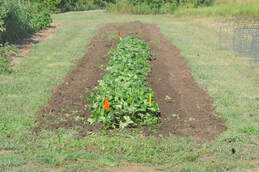 Now is the time to fertilize strawberries in order to increase the number of fruit produced next spring. Plenty of daylight and warm temperatures during June, July and August promotes the growth of new runner, or daughter, plants. As daylight hours dwindle and temperatures grow cooler in September and October, fruit buds for the next year's fruit crop develop. To get a good berry crop next spring, it is important for strawberry plants to be vigorous during this period of fruit bud development. Nitrogen, applied now, will help promote fruit bud development. A general application rate is ½ to 3/4 pound of actual nitrogen per 100 feet of row. The nitrogen may be in the form of a fertilizer mixture such as ammonium phosphate or 12-12-12, or in a fertilizer containing only nitrogen such as urea or ammonium nitrate. Some specific examples would include: Iron + (11-0-0) at 6 pounds per 100 feet of row. 12-12-12 at 5.5 pounds per 100 feet of row. Nitrate of Soda (16-0-0) at 4 pounds per 100 feet of row Ammonium sulfate (21-0-0) at 3 pounds per 100 feet of row Urea (46-0-0) at 1.5 pounds per 100 feet of row On sandy soils, the rate may be increased by about a half. After spreading the fertilizer, water the area applying at least a half-inch of water to move the nitrogen into the strawberry root areas. (Ward Upham) 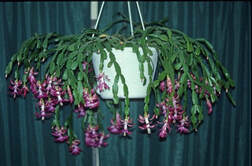 Christmas Cactus (Schlumbergera bridgesii) and Thanksgiving Cactus (Schlumbergera truncate) are popular flowering holiday plants. Both are epiphytes native to the jungles of South America. Epiphytic plants grow on other plants and use them for support but not for nutrients. Though these cacti are different species, they will hybridize and produce varying stem shapes. Christmas cactus normally has smooth stem segments. Thanksgiving Cactus has hook-like appendages on each segment. Flowering will not occur unless induced by temperature and light treatment. If the temperature is held at 50 to 55 degrees F, flowering will occur regardless of day length. But flowering usually is not uniform. Temperatures below 50 degrees F prevent flowering. Nights greater than 12 hours long and temperatures between 59 and 69 degrees also can generate flowers. Twenty-five consecutive long nights is enough for flower initiation. Nights will naturally become greater than 12 hours close to the fall equinox, which is on September 22 this year. A plant receiving natural sunlight but no artificial light during night hours, will have this 25-day requirement met about October 17. Alternatively, plants can be placed in a dark place such as a closet for over 12 hours each day to induce flowering. It takes an additional nine to 10 weeks for flowers to complete development and bloom. Both of these cacti like bright indirect light during the day. Too much sun may cause leaves to turn yellow. Common household temperatures are fine. Keep soil constantly moist but not waterlogged. These plants seem to flower best if kept a little pot bound. If you need to repot, try waiting until spring. (Ward Upham) 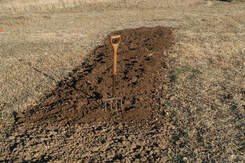 Many gardeners make compost without understanding how to use it around the home. Compost has a number of horticultural applications, which are described below. Fertilization and soil improvement. Organic materials can be added to improve soil looseness and workability. Heavy, tight clay soils benefit from the loosening effects of composted organic materials. In sandy soils, organic material acts as a sponge to hold water and nutrients. Compost contains nutrients plants require. The amount of specific nutrients depends on the types of materials composted and how much water the pile contains. The suggested application rate is 50 to 100 pounds per 100 square feet, which is about ¼ inch of material spread over the entire garden. The best time to apply compost is just before tillage in either the spring or fall to incorporate the compost throughout the root zone. In Kansas, garden soils are often tilled in the fall. Compost made early in the season should be ready by then, or use last year’s compost if you have a two-pile system. Compost at planting. Apply a band of compost in the bottom of a row trench or add several shovels full to the bottom of planting holes. Tomato plants, perennial flowers, trees, and shrubs benefit from the slow release of nutrients through the early growth period. Compost can be applied as a top dressing for seeded vegetables and flowers to prevent soil crusting. It can be used as a substitute for soluble fertilizer or starter solution when mixed in equal parts with water. Leftover compost can be added to garden soil later. Potting mix for seedlings. Compost that has been screened for large particles can be mixed with soil or sand in approximately equal parts, and then used as a growing medium. To ensure healthy seedlings, compost should be well deteriorated and free of harmful disease organisms and insects. Using compost on a lawn. The best way to use compost is to apply it liberally before planting. Fertilize by adding a thin layer of top dressing every year. (Ward Upham) 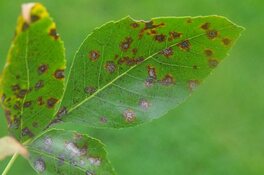 With all the concern about Emerald Ash Borer (EAB), many people may assume that any ash tree with problems is being attacked by EAB. However, EAB has only been confirmed in Atchison, Doniphan, Douglas, Jackson, Jefferson, Johnson, Leavenworth, Miami, Shawnee & Wyandotte counties. One of the other problems we see with ash is Mycosphaerella Leaf Spot. Though this disease looks serious, it is not. Mycosphaerella Leaf Spot causes small, brown spots that enlarge to become blotches and may result in early leaf drop. This disease can be severe enough to cause complete defoliation of the tree. However, defoliation this late in the growing season will not hurt the health of the tree. Therefore, because this disease appears sporadically and tree health is not harmed, we do not recommend treatment. Furthermore, treatment would have to be preventative and applied before the disease had infected the leaves. Applying a fungicide now would have no effect. (Ward Upham) 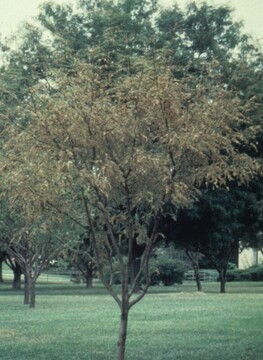 Honeylocust trees in some parts of Kansas are browning due to mimosa webworm. Damage is caused by the larvae, which mat leaves together with webbing and use them as a nest. These nests are normally found on the tips of branches and appear as brown areas from a distance. Closer inspection reveals the white webbing. Mature larvae are 0.5 inches long, light green to dark brown and sport five longitudinal white stripes. The adults are silvery gray moths with small black spots on the wings. Mimosa webworm can severely defoliate trees. However, if the damage occurs late (such as now), healthy trees are not significantly harmed. Also, it’s late enough in the season that spraying will not help the trees. If mimosa webworm is a yearly problem on your honeylocusts, apply an insecticide such as BT (Dipel or Thuricide) or spinosad. Spinosad is found in Natural Guard Spinosad, Captain Jack's Deadbug Brew, Bonide Colorado Potato Beetle Beater and Monterey Garden Insect Spray. Both of these products are organic controls. Traditional controls that contain cyfluthrin or bifenthrin are also effective. However, any of these products must be applied earlier in the year when you first notice webbing. (Ward Upham) 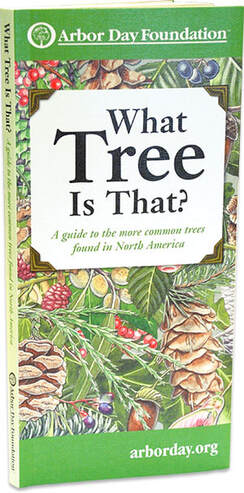 If you need a simple tree identification key, consider the “What Tree is That?” from the Arbor Day Foundation. Even though it is a bit over 150 pages, the booklet is small enough to fit in your pocket, yet covers many of the trees found in Kansas. The guide uses a step-by-step approach for identification that is perfect for those who are unfamiliar with the technical names of plant parts. Full color botanical illustrations are also helpful. More information can be found at http://www.arborday.org/trees/whatTree/ (Ward Upham) |
AuthorsCynthia Domenghini runs the Horticulture Response Center in the Department of Horticulture and Natural Resources at Kansas State University. Other contributors include K-State Extension Specialists. Archives
March 2024
Categories
All
|
| K-State Research and Extension Horticulture Newsletter |
|
 RSS Feed
RSS Feed
